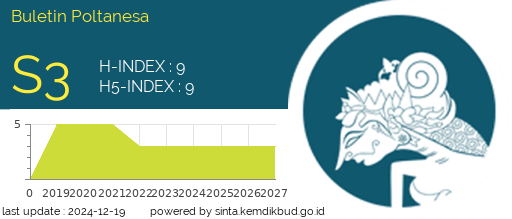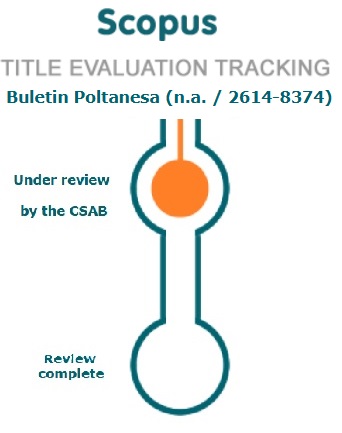Pseudo Spiritual Experience Religious and Cultural Tourism in West Java
DOI:
https://doi.org/10.51967/tanesa.v25i1.3035Keywords:
Spiritual, Religious Tourism, Cultural Tourism, Maudhu'i, Al Qur'anAbstract
This research focuses on the issue of the lack of spiritual experience gained by visitors to religious and cultural tourism in Indonesiatourism cases for the Al Jabbar Grand Mosque, the Mount Padang Site, and the Sagati Cultural Park in West Java.The aim of this research is to identify the spiritual level of visitors to religious and cultural tourism objects in West Java.This problem is solved based on theories of the spiritual experiences of religious and cultural tourism visitors with variablesworship, science, da'wah, tadabur, diversity, self-reflection, and the search for meaning.This research uses two approaches, namely qualitative and quantitative. A qualitative approach was carried out using the Maudhu'i Al Qur'an and Hadith analysis method to identify the main ideas for the development of religious and cultural tourism as a whole.based on visitors' spiritual experiences. The quantitative approach in this research uses a descriptive statistical analysis method of respondents' answers regarding the level of spiritual experience of visitors. The results of this research conclude the classification of the spiritual level of tourist objects through an analysis of the differences between the reality of respondents' satisfaction answers in the field and the theoretical conception of the spiritual experience that visitors should have. This research also provides recommendations for improving the quality of spiritual experiences at religious and cultural tourism objects.
References
Abduh, M. (2021). Management of the Grand Islamic Center Mosque as a Religious Tourism Attraction. Journal of Public Policy, 12(1), 43–48. https://jkp.ejournal.unri.ac.id/index.php/JKP/article/view/7924
Al-Jabbar, D. K. (2023). Specialties of the Al Jabbar Grand Mosque. Retrieved from https://aljabbar.jabarprov.go.id/
Ashiddiqie, M. Hasbi. (2020). Experiential Education in the Perspective of Islamic Education. Kopertais5Aceh Journal, 70–94. htpps://jurnal.kopertais5aceh.or.id
Darto. (2017). Community Empowerment in Efforts to Develop Tourism Villages in Cijulang District, Pangandaran Regency, West Java Province. UNIKOM Scientific Magazine, 15(1), 61–70. https://doi.org/10.34010/miu.v15i1.277
Effendi. (2021). Spiritual Meaning in the Performing Arts Pacer Ing Penjuru Eska Theater Works. Sunan Kalijaga State Islamic University, Yogyakarta.
Ghani, YA (2017). Development of Culture-Based Tourism Destination Infrastructure in West Java. Journal of Tourism, 4(1), 22–31. https://doi.org/10.31294/khi.v9i1.3604
Hanum, F., Suganda, D., Muljana, EB, & Nugraha, A. (2019). Cultural Preservation Efforts at Sagati Cultural Park. Tornare, 1(1), 17. https://doi.org/10.24198/tornare.v1i1.25346
Haq, F. and Jackson, J. (2006). Exploring Consumer Segments and Typologies of Relevance to Spiritual Tourism. Queensland: Central Queensland University. [cited 25 September 2008]. Available from: http://smib.vuw.ac.nz:808/www.ANZMAC2006/documents/Haq Farooq.pdf (27 June 2015)
Kusuma, IGARD, & Suryasih, IA (2016). Spiritual Tourism Activities and Travel Motivation at the Tanah Lot Tourist Attraction, Tabanan Regency. Journal of Tourism Destinations, 4(2), 118. https://doi.org/10.24843/jdepar.2016.v04.i02.p2
Khotimah, K., Wilopo, & Hakim, L. (2017). Cultural Tourism Destination Development Strategy (Case Study of the Trowulan Site Area as Leading Cultural Tourism in Mojokerto Regency). Journal of Business Administration (JAB), 41(1),
Maisyani, VMT, Damayanti, SP, & Agusman, A. (2022). Community Participation in the Management of Traditional Villages in Karang Bajo Village, Bayan District, North Lombok Regency. Journal Of Responsible Tourism, 2(2), 331–342. https://doi.org/10.47492/jrt.v2i2.2168
Maulana, Muhammad Iqbal. (2019). "Creative Tourism Development in Badud Village - Margacinta Village."
Nair, B.B., & Dileep, M.R. (2021). Drivers of Spiritual Tourism: A Destination-Specific Approach Drivers of Spiritual Tourism: A Destination-Specific Approach. 9(5).
Narlita, S., Aulia, RN, Wajdi, F., & Khumaeroh, U. (2017). Formation of Religious Character Through Religious Tourism. Proceedings of the Annual National Seminar, Faculty of Social Sciences, Medan State University, 1(1), 159–162. http://semnastafis.unimed.ac.id
Rafsanjani, AGAH (2023). Analysis of the Potential of Religious Tourism Objects as a Source of Community Income in an Effort to Reduce Poverty Levels [Sunan Gunung Djati State Islamic University Bandung
Rosidah, R., Azizah, LMA, & Akbar, A. (2022). The Relationship Between Daily Spiritual Experiences and Stress Levels in Students When Working on Their Thesis. 8–52.
Siswanto. (2007). Tourism and Cultural Heritage Preservation. 1, 155–173.
Sukaatmadja, IPG, Wardana, M., Purbawangsa, IBA, & Rahanatha, GB (2017). Spiritual Tourism: Based on Hindu Religious Ceremonial Events. 529–538.
Suminar, R., & Abidin, Z. (2018). The Spiritual Experience of Visitors at Gunung Padang Megalithic Site in Cianjur, West Java, Indonesia. Journal of Archaeological Science: Reports, 21, 1147-1153.
Ashiddiqie, M. Hasbi. (2020). Experiential Education in the Perspective of Islamic Education. Kopertais5Aceh Journal, 70–94. htpps://jurnal.kopertais5aceh.or.id
Wardani, FH (2018). Analysis of factors that influence the interest in visiting religious tourists in Demak Regency. Yogyakarta: Yogyakarta Muhammadiyah University.
Yondri, L. (2019). Gunung Padang Site: Culture, Humans and the Environment.
Downloads
Published
How to Cite
Issue
Section
License
Copyright (c) 2024 Buletin Poltanesa

This work is licensed under a Creative Commons Attribution-ShareAlike 4.0 International License.
The copyright of this article is transferred to Buletin Poltanesa and Politeknik Pertanian Negeri Samarinda, when the article is accepted for publication. the authors transfer all and all rights into and to paper including but not limited to all copyrights in the Buletin Poltanesa. The author represents and warrants that the original is the original and that he/she is the author of this paper unless the material is clearly identified as the original source, with notification of the permission of the copyright owner if necessary.
A Copyright permission is obtained for material published elsewhere and who require permission for this reproduction. Furthermore, I / We hereby transfer the unlimited publication rights of the above paper to Poltanesa. Copyright transfer includes exclusive rights to reproduce and distribute articles, including reprints, translations, photographic reproductions, microforms, electronic forms (offline, online), or other similar reproductions.
The author's mark is appropriate for and accepts responsibility for releasing this material on behalf of any and all coauthor. This Agreement shall be signed by at least one author who has obtained the consent of the co-author (s) if applicable. After the submission of this agreement is signed by the author concerned, the amendment of the author or in the order of the author listed shall not be accepted.











